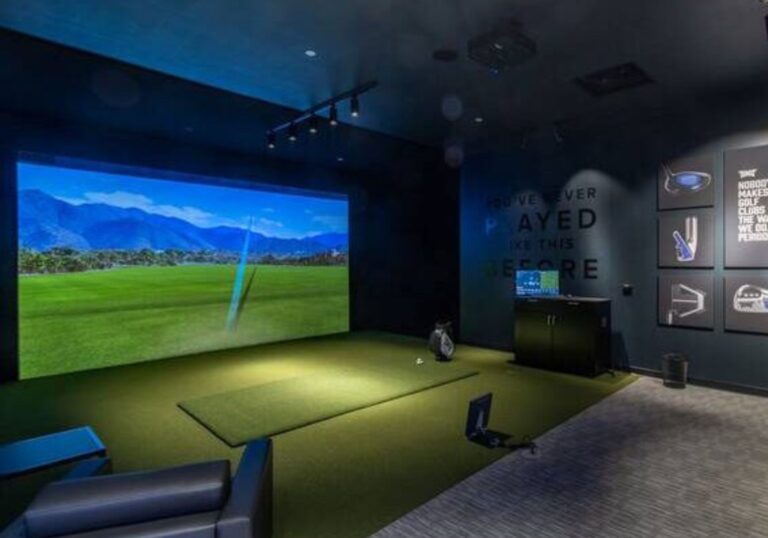Introduction
Imagine stepping into a fitting center branded by your favorite golf manufacturer and seeing every club, shaft and adjustment tool tailored for that one brand. Whether you swear by PXG’s high-performance clubs and experience or trust Titleist’s tour-proven products, an OEM-specific fitting session can unlock tech and tweaks you will not find anywhere else. In this guide you will learn exactly what to expect, who benefits most, how much it typically costs and insider tips to make the most of your brand-focused fitting.
Why Choose an OEM-Specific Fitting
Deep Brand Expertise
When you book with TaylorMade, Titleist, PING, PXG or COBRA fitting centers, every staff member is certified in that brand’s technology. They know the nuances of adjustable hosels, proprietary shaft pairings and head designs better than any generalist.
Guaranteed OEM Parts
You walk out knowing that every loft, lie and weight adjustment is made with factory-authorized tools and genuine parts. Unlike off-the-rack clubs, you will have the confidence that your setup matches the exact specs designed by the manufacturer’s engineers.
Proprietary Analysis Tools
Many OEM centers include unique evaluation tools. Titleist’s Performance Institute movement screen lets them assess your swing mechanics. TaylorMade’s Shot Vision high-speed camera captures impact dynamics. PINGS’s Trajectory Tuner precisely maps flight curves. PXG may incorporate weight port adjustments that only their tech allows.

Who Benefits Most from This Service
Brand Loyalists
You only play one brand’s gear and want every possible performance edge within that lineup. These also represent a very unique and memorable experience for those who love the brands they are being fit by.
Model-Specific Shoppers
If you have your eye on the new PXG driver or the latest Titleist irons, this is the best way to test exact specs.
Players Seeking Tour-Level Customization
The adjustable hosels, interchangeable sole weights and ultra-precise loft/lie tuning deliver fine-tuning down to one-tenth of a degree.
Golfers Who Value Factory Warranty Integrity
All adjustments occur through official channels, maintaining your warranty and resale value.
What to Expect During Your OEM Fitting
1. Pre-Session Questionnaire
Ahead of your appointment you will fill out a digital form covering:
- Playing history and handicap
- Typical ball flight tendencies
- Physical considerations or past injuries
This information helps the fitter prepare ideal starting points.
2. Physical and Swing Assessment
At Titleist Performance Institute locations you may undergo a basic movement screen to evaluate:
- Spine tilt and rotation
- Hip mobility
- Knee and ankle flexion
Other centers might offer gait analysis or posture screening. This is a lot more than just hitting golf balls.
3. Baseline Data Collection
You hit shots with your current clubs on a launch monitor. Key metrics captured include:
- Club head speed
- Ball speed
- Launch angle
- Spin rate
- Shot dispersion
These baseline numbers allow direct comparison with OEM demo heads and your current gamer.
4. Iterative Club Testing
Over 60 to 90 minutes you will:
- Test multiple head models within the brand lineup
- Swap between OEM-approved shafts of different flex, weight and torque
- Experiment with adjustable hosel settings for loft and lie
- Try different grip sizes or tacky grip compounds
Each change is logged and compared in real time so you can see exactly how your ball flight improves or trends.
5. Final Spec Report
At the end of your session the fitter provides a comprehensive spec sheet showing:
- Head model and loft/lie settings
- Shaft make, model, flex and weight
- Grip type and size
- Any recommended customizations (for example, counterweights in PXG driver heads)
Most OEM centers will email you a digital report and can place a factory-built order on the spot.

Typical Costs and Value
- Fitting Fee Range: $150 and up depending on brand and session length
- Club Pricing: Entirely depends on the brand and shaft options you are fit into
- Fee Credit: Nearly all brands credit your fitting fee toward a new club purchase within their lineup
While the fee may seem steep compared to free big-box fittings, the factory credit and exacting customization often offsets the cost when you commit to a new club.
Pros and Cons of OEM-Specific Fittings
Pros
- Intensive brand knowledge and proprietary tooling
- Real-time, precise loft/lie and weight adjustments
- Genuine OEM parts guarantee performance and warranty integrity
Cons
- No cross-brand comparisons—you see only one manufacturer’s options
- Scheduling can require 2 to 3 weeks lead time at peak season
- Pressure to buy from that brand’s premium price points
Tips to Maximize Your Session
Do Your Pre-Work
Study each brand’s latest models so you can speak intelligently about what interests you most.
Be Honest About Your Goals
Tell the fitter if you want maximize carry, reduce spin, or tighten your dispersion patterns.
Bring Course Notes
Share any recurring issues—say a slice or ballooning approach shots—so they can select gear to counter those flaws.
Review Your Digital Report
After your fitting, compare specs side by side and ask follow-up questions within 48 hours while details are fresh.
Final Thoughts
OEM-specific fittings blend brand authority with precision tuning that can unlock your next level of performance. By choosing Titleist, TaylorMade, PING, PXG or Cobra fitting centers you gain access to factory techniques and proprietary tools you will not find elsewhere. If you want to squeeze every extra yard and tighten your shot groups with gear built exactly to your swing profile, schedule your OEM fitting today and experience the difference that true brand specialization provides.
